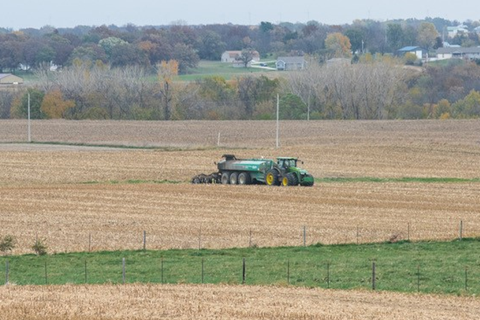As fall approaches, many farmers are evaluating the timing of their manure application. Ideally, ammonium-rich manures are applied when temperatures are cooler (50 degrees Fahrenheit and cooling) to increase the probability that applied nitrogen will still be in the upper soil profile next year when crops are growing.
However, sometimes that’s not possible, and applications earlier in the fall may be necessary, according to Daniel Andersen, professor and extension agricultural engineering specialist at Iowa State University.
“Whether you're dealing with foam in your manure pits or facing storage capacity concerns after a wet year, applying manure earlier than desired can be justified —especially from a safety standpoint,” he said. “Always keep safety as your top priority when dealing with early applications.
“Performing manure removal and agitation when the barn is empty allows you to aggressively agitate, ensuring that solids are thoroughly mixed and removed,” Andersen said. “It also protects animals and workers from unsafe air quality conditions.”
Foam in manure pits is more than an inconvenience, it’s a safety hazard. Foam can trap dangerous gases like methane, which significantly increases the risk of explosions.
“You need to take action when your pits foam and more than 6 inches of foam are present,” Andersen said. “An ideal time to manage the risk is between turns when your barn is empty, as it allows being more aggressive with your manure agitation, treatment and removal strategy.”
Agitate the manure thoroughly to break down the foam and release any trapped gases. Be sure to maintain high ventilation levels to exhaust the released methane as you do so and to turn off potential ignition sources.
“Hydrogen sulfide (H₂S) is one of the most dangerous gases associated with manure storage, and it can be lethal at high concentrations,” Andersen said. “This gas is produced when manure is agitated, especially after it has settled for long periods that allowed solids to accumulate and anaerobic conditions to intensify.”
When these layers of solids are disturbed during agitation, H₂S can be released in large quantities, posing a severe risk to both humans and livestock. The publication "Hydrogen Sulfide Safety – Manure Agitation (AE3604)" describes how to stay safe during manure agitation.
Andersen advises producers to consider using pit treatments that target foam reduction and potentially reset the microbial population in the pit. This can help prevent foam from becoming a recurring problem. For more details, see this information sheet from the Iowa Manure Management Action Group.
Photo credit: Spreading manure in field, by Rachel Kennedy

Comments
Submit a CommentPlease refresh the page to leave Comment.
Still seeing this message? Press Ctrl + F5 to do a "Hard Refresh".